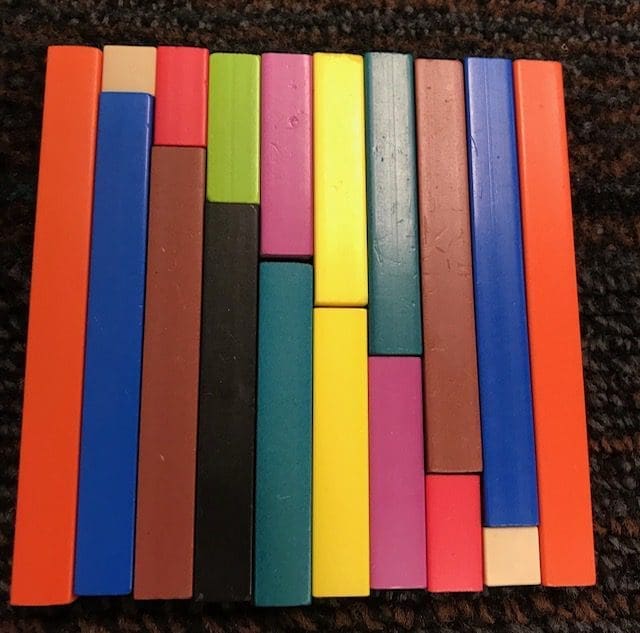Why should you use manipulatives for teaching math to all students, not just struggling ones?
Studies show that elementary children develop meaningful understanding of mathematical concepts when manipulative materials are used. Jean Piaget, one of the first psychologists to study cognitive development in children, suggested that concepts are formed as a result of “action experience building up mental structures that serve as a reference system for the interpretation of direct sensory experience.”
The use of manipulative materials by young students helps to develop basic skills and results in the enhanced formation of accurate early mathematical concepts. Using manipulatives also develops the ability to visualize and solve problems spatially, which has been proven to have a strong correlation to advanced mathematical skill.
Here are some of my favorite manipulatives for teaching math in elementary school.
Cuisenaire Rods
If I were to choose only one manipulative to have in the elementary school classroom, I would choose Cuisenaire Rods (or integer blocks such as Mortensen or Math U See that are based on the same concept). And yet most children I work with have never used or even seen these before. Cuisenaire rods are a commonly used math manipulative in Europe, where a Belgian teacher invented them in the 1940s. Georges Cuisenaire was a violin player inspired by the relationship between music and math. The rods he developed are wooden or

